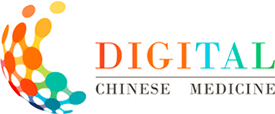Abstract:
Modern western medicine typically focuses on treating specific symptoms or diseases, and traditional Chinese medicine (TCM) emphasizes the interconnections of the body’s various systems under external environment and takes a holistic approach to preventing and treating diseases. Phenomics was initially introduced to the field of TCM in 2008 as a new discipline that studies the laws of integrated and dynamic changes of human clinical phenomes under the scope of the theories and practices of TCM based on phenomics. While TCM Phenomics 1.0 has initially established a clinical phenomic system centered on Zhenghou (a TCM definition of clinical phenome), bottlenecks remain in data standardization, mechanistic interpretation, and precision intervention. Here, we systematically elaborates on the theoretical foundations, technical pathways, and future challenges of integrating digital medicine with TCM phenomics under the framework of “TCM phenomics 2.0”, which is supported by digital medicine technologies such as artificial intelligence, wearable devices, medical digital twins, and multi-omics integration. This framework aims to construct a closed-loop system of “Zhenghou–Phenome–Mechanism–Intervention” and to enable the digitization, standardization, and precision of disease diagnosis and treatment. The integration of digital medicine and TCM phenomics not only promotes the modernization and scientific transformation of TCM theory and practice but also offers new paradigms for precision medicine. In practice, digital tools facilitate multi-source clinical data acquisition and standardization, while AI and big data algorithms help reveal the correlations between clinical Zhenghou phenomes and molecular mechanisms, thereby improving scientific rigor in diagnosis, efficacy evaluation, and personalized intervention. Nevertheless, challenges persist, including data quality and standardization issues, shortage of interdisciplinary talents, and insufficiency of ethical and legal regulations. Future development requires establishing national data-sharing platforms, strengthening international collaboration, fostering interdisciplinary professionals, and improving ethical and legal frameworks. Ultimately, this approach seeks to build a new disease identification and classification system centered on phenomes and to achieve the inheritance, innovation, and modernization of TCM diagnostic and therapeutic patterns.









 下载:
下载: